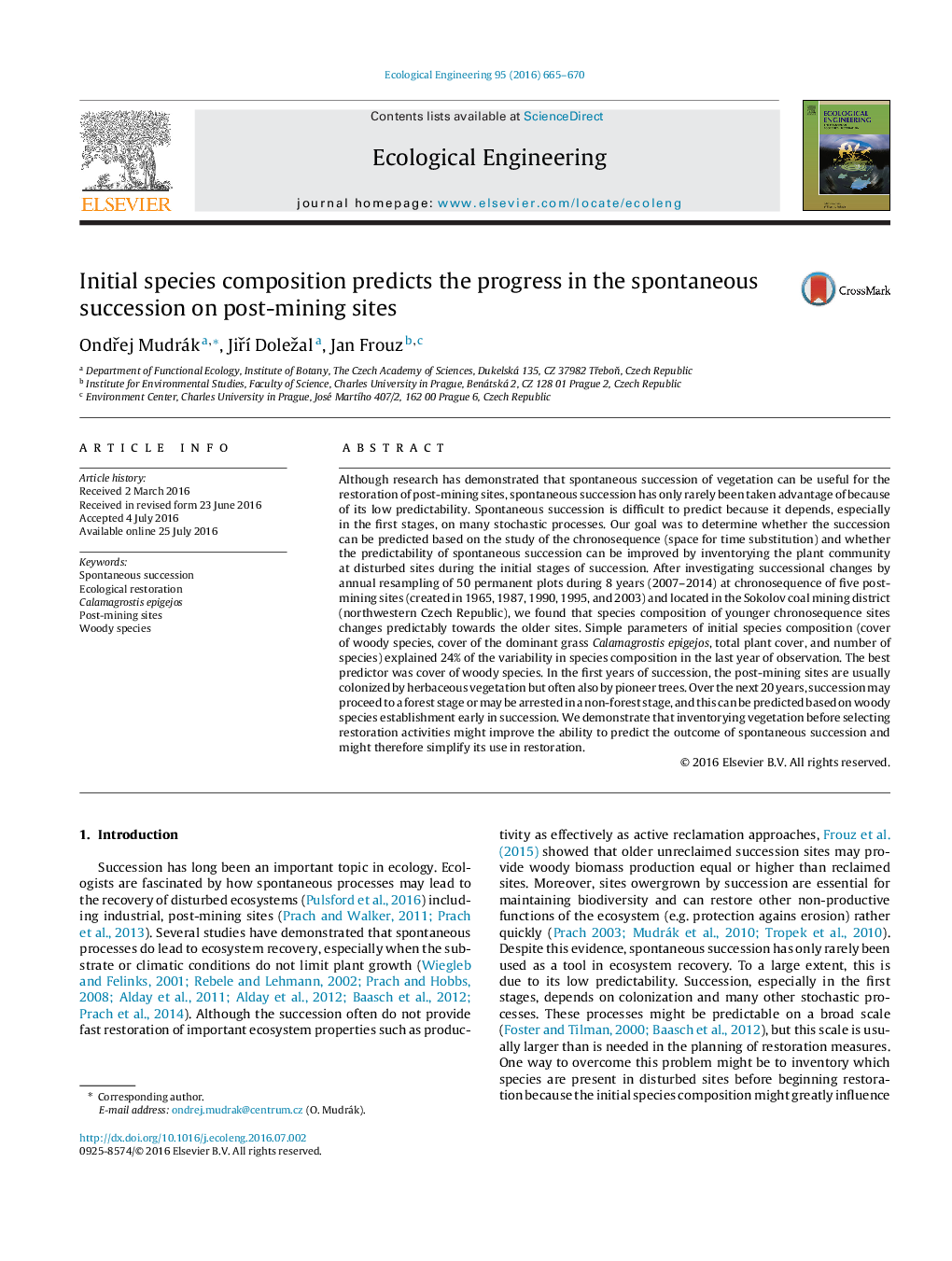| Article ID | Journal | Published Year | Pages | File Type |
|---|---|---|---|---|
| 4388496 | Ecological Engineering | 2016 | 6 Pages |
Although research has demonstrated that spontaneous succession of vegetation can be useful for the restoration of post-mining sites, spontaneous succession has only rarely been taken advantage of because of its low predictability. Spontaneous succession is difficult to predict because it depends, especially in the first stages, on many stochastic processes. Our goal was to determine whether the succession can be predicted based on the study of the chronosequence (space for time substitution) and whether the predictability of spontaneous succession can be improved by inventorying the plant community at disturbed sites during the initial stages of succession. After investigating successional changes by annual resampling of 50 permanent plots during 8 years (2007–2014) at chronosequence of five post-mining sites (created in 1965, 1987, 1990, 1995, and 2003) and located in the Sokolov coal mining district (northwestern Czech Republic), we found that species composition of younger chronosequence sites changes predictably towards the older sites. Simple parameters of initial species composition (cover of woody species, cover of the dominant grass Calamagrostis epigejos, total plant cover, and number of species) explained 24% of the variability in species composition in the last year of observation. The best predictor was cover of woody species. In the first years of succession, the post-mining sites are usually colonized by herbaceous vegetation but often also by pioneer trees. Over the next 20 years, succession may proceed to a forest stage or may be arrested in a non-forest stage, and this can be predicted based on woody species establishment early in succession. We demonstrate that inventorying vegetation before selecting restoration activities might improve the ability to predict the outcome of spontaneous succession and might therefore simplify its use in restoration.
